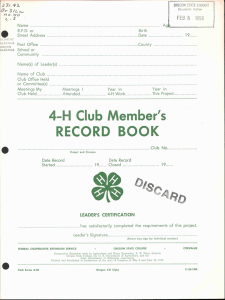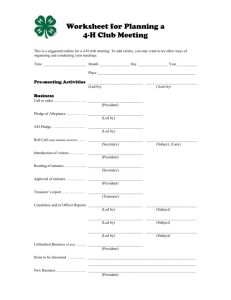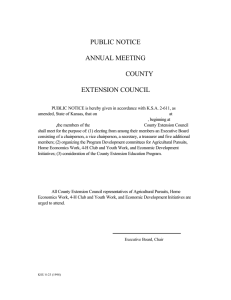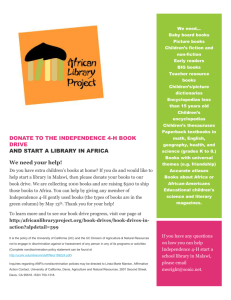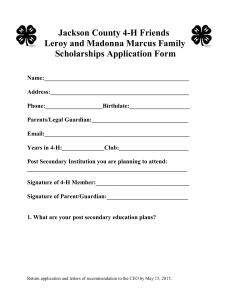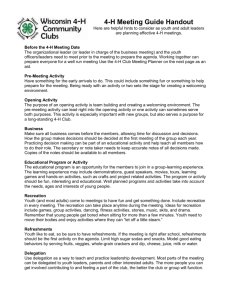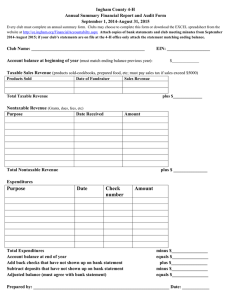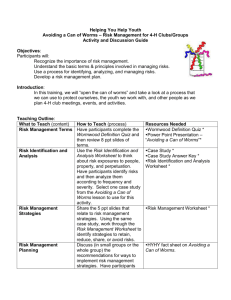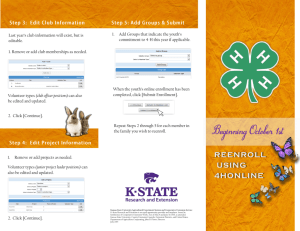Where Am I in Public Speaking - Georgia 4-H
advertisement
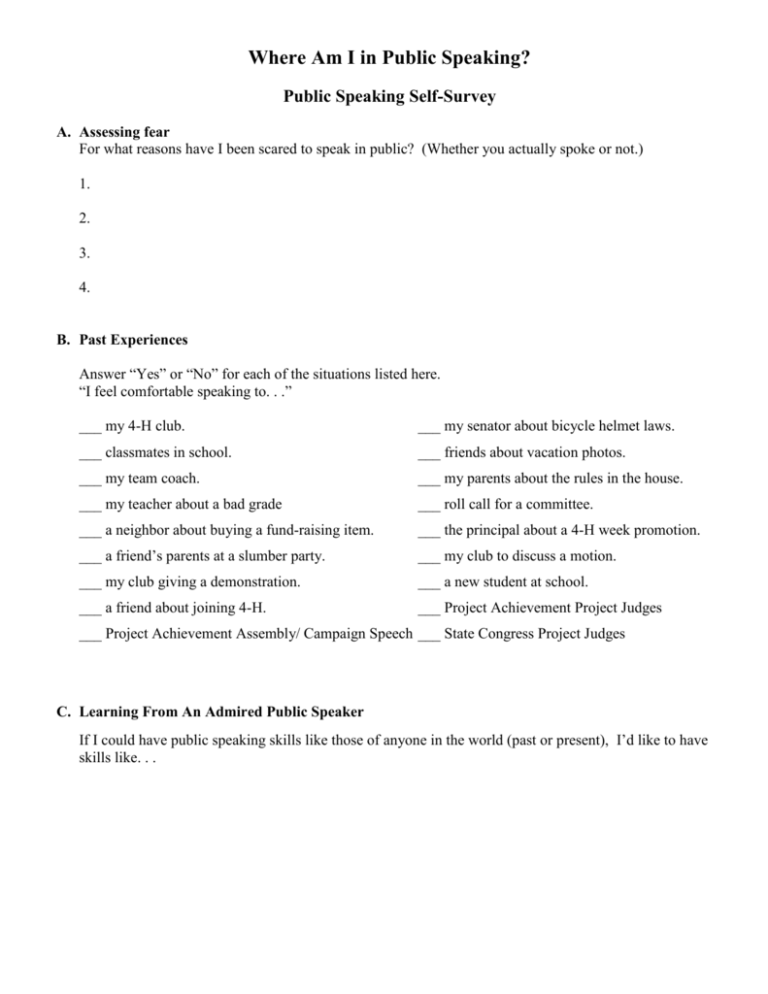
Where Am I in Public Speaking? Public Speaking Self-Survey A. Assessing fear For what reasons have I been scared to speak in public? (Whether you actually spoke or not.) 1. 2. 3. 4. B. Past Experiences Answer “Yes” or “No” for each of the situations listed here. “I feel comfortable speaking to. . .” ___ my 4-H club. ___ my senator about bicycle helmet laws. ___ classmates in school. ___ friends about vacation photos. ___ my team coach. ___ my parents about the rules in the house. ___ my teacher about a bad grade ___ roll call for a committee. ___ a neighbor about buying a fund-raising item. ___ the principal about a 4-H week promotion. ___ a friend’s parents at a slumber party. ___ my club to discuss a motion. ___ my club giving a demonstration. ___ a new student at school. ___ a friend about joining 4-H. ___ Project Achievement Project Judges ___ Project Achievement Assembly/ Campaign Speech ___ State Congress Project Judges C. Learning From An Admired Public Speaker If I could have public speaking skills like those of anyone in the world (past or present), I’d like to have skills like. . . The things I admire most about the above-named person’s speaking skills are. . . How do you think this person became a good public speaker? D. Public Speaking Goals I Will Set For Myself This year I will . . . A Year from now I want to be able to . . . Ten years from now I want to be able to . . . Tips for Writing Your Speech Preparation is the key to a successful public talk. The effectiveness of your talk will be related to five essentials of preparation: 1. Select a central thought. 2. Develop an opening statement (attention getter). 3. Select supporting material which confirms the central thought. 4. Select “attention holders.” 5. Develop a closer (summary). 1. Select a central thought—your goal, aim or objective. This is usually a thought which sums up in one sentence the basic idea that you wish to convey. You may wish to say that “4-H leadership provides valuable opportunities to help others,” or that “I hope college will help me to become prepared for a career .” Either is a suitable central thought for a short talk. This first step is the most important of all. Think about what you want your audience to know, feel, or do. In other words, how do you want them to behave after hearing you. 2. Develop an opening statement. Try to grasp your listeners’ attention within the first few seconds of your talk. You may do this with an unusual fact, an interesting idea, or a thought provoker. Maybe you could explain why your topic is important or timely. 3. Select supporting material which confirms your central thought. Facts, examples, and opinions all tend to establish a feeling in the listeners’ minds that your position is correct. You may choose to use examples of teen leadership work to support the central thought on 4-H leadership. You might discuss aspects of the college curriculum that interests you most to show how it would prepare you for a certain career. 4. Select “attention holders.” You must keep in mind that it is necessary to hold the attention of your listeners throughout your talk. You may use human interest stories, arousing expressions, or vivid examples to do this. Try a touch of humor, arouse curiosity, or pose a question. Usually it is wise to use a combination of interest materials, and it is wise to place them where interest may lag. This is usually in the middle and latter portions of your talk. 5. Develop your closer. The closing is designed to give the listener a strong reminder of the importance of the central thought of your talk. The closer may be in form of a summary. Re-emphasize the key point of your talk. State specifically what you want the listener to know, feel, or do. This might be a “call for action.” My Working Outline 1. Selection of central thought. ____________________________________________________________ ________________________________________________________________________________________ ________________________________________________________________________________________ ________________________________________________________________________________________ 2. Opening statement (attention getters). ______________________________________________________ ________________________________________________________________________________________ ________________________________________________________________________________________ ________________________________________________________________________________________ 3. Supporting material. ___________________________________________________________________ ________________________________________________________________________________________ ________________________________________________________________________________________ ________________________________________________________________________________________ 4. Attention holders. _____________________________________________________________________ ________________________________________________________________________________________ ________________________________________________________________________________________ ________________________________________________________________________________________ 5. Closer (summary). ____________________________________________________________________ ________________________________________________________________________________________ ________________________________________________________________________________________ ________________________________________________________________________________________
